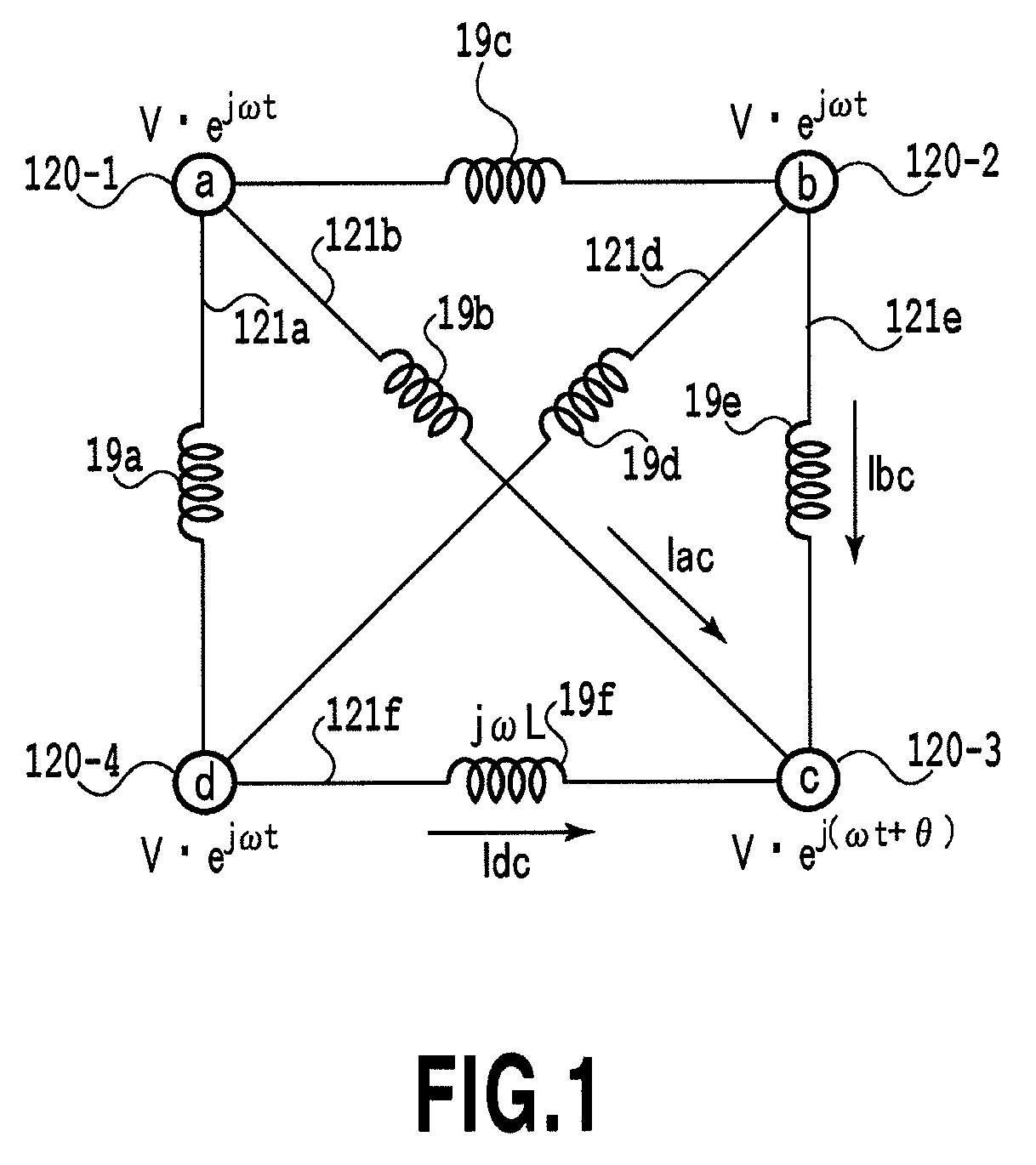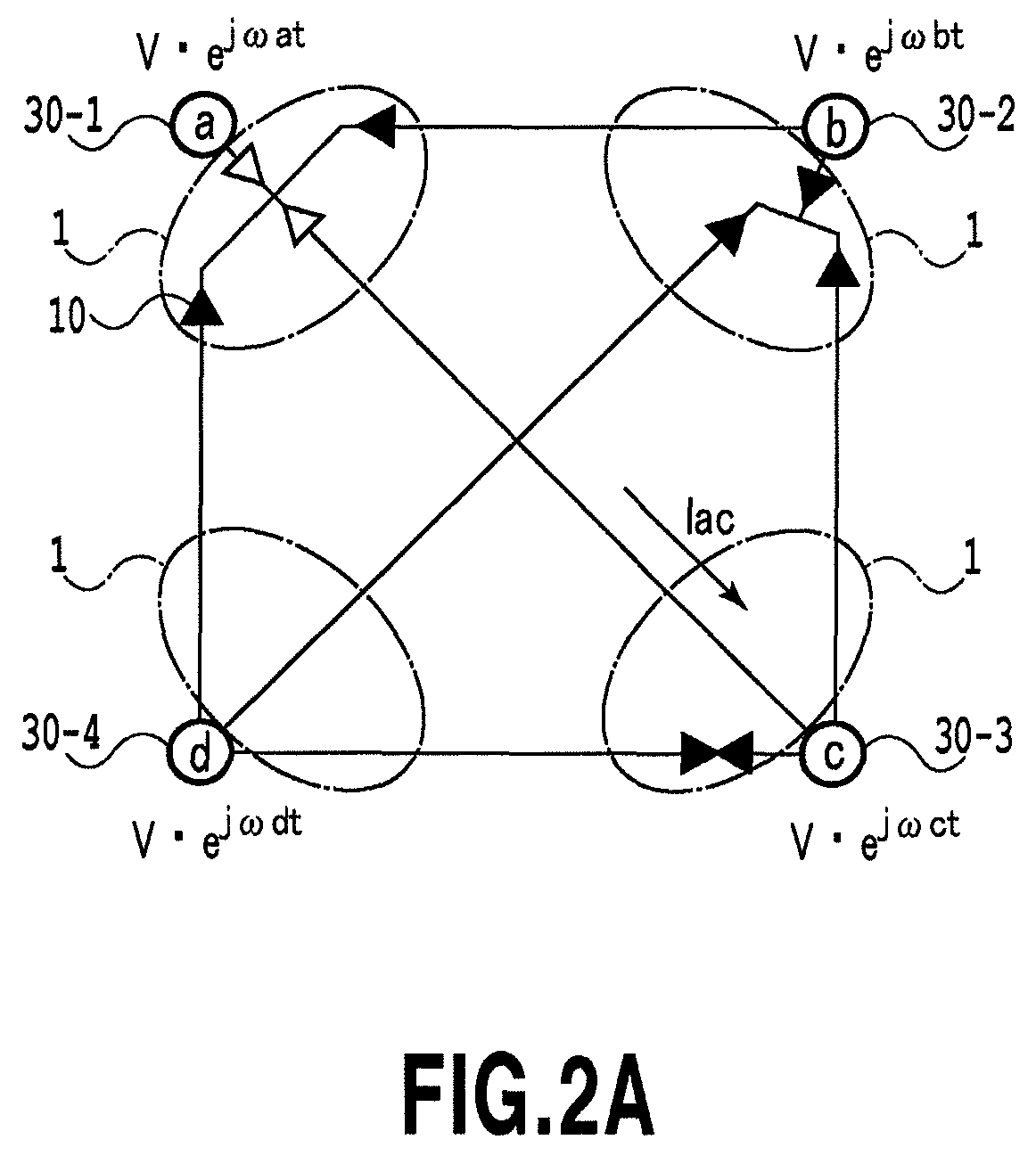Multi-terminal power conversion device, multi-terminal power transfer device, and power network system
a power network and multi-terminal technology, applied in the direction of electric variable regulation, process and machine control, instruments, etc., can solve the problems of affecting the synchronization capability of the existing grid, the tendency of sources to impair the frequency stability of the system, and the inability of power generation and wind power generation to provide synchronizing power, etc., to achieve flexible power exchange and reduce the capacity of interconnection devices and network connections
- Summary
- Abstract
- Description
- Claims
- Application Information
AI Technical Summary
Benefits of technology
Problems solved by technology
Method used
Image
Examples
Embodiment Construction
[0103]First, the difference between power interchange in a conventional AC synchronous grid and power interchange based on power conversion that is the basic principle of the present invention will be described.
[0104]FIG. 1 shows a conventional AC synchronous grid in which four power grids (nodes 120-1 to 120-4) are connected together by six interconnecting electric lines (links 121-1 to 121-4). Each of the interconnecting electric lines has a reactor component 19 with a line of inductance L. FIG. 2A shows an AC asynchronous grid according to the present invention in which four nodes (nodes 30-1 to 30-4) are connected together by six links via A connection terminals and B connection terminals of multi-terminal power conversion devices 1. For simplification, AC filters, connection reactors and transformers are omitted from the figures.
[0105]In an initial condition of a circuit network in FIG. 1, the four nodes are synchronized at a voltage V, a phase of 0, and a frequency ω / 2π. In th...
PUM
 Login to View More
Login to View More Abstract
Description
Claims
Application Information
 Login to View More
Login to View More - R&D
- Intellectual Property
- Life Sciences
- Materials
- Tech Scout
- Unparalleled Data Quality
- Higher Quality Content
- 60% Fewer Hallucinations
Browse by: Latest US Patents, China's latest patents, Technical Efficacy Thesaurus, Application Domain, Technology Topic, Popular Technical Reports.
© 2025 PatSnap. All rights reserved.Legal|Privacy policy|Modern Slavery Act Transparency Statement|Sitemap|About US| Contact US: help@patsnap.com



